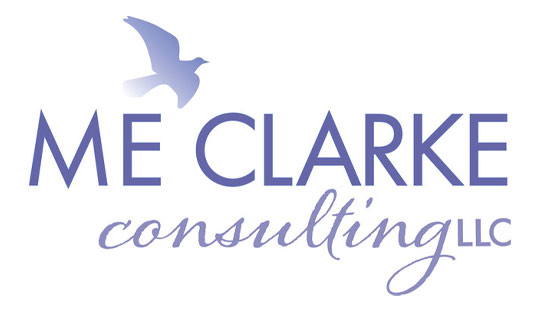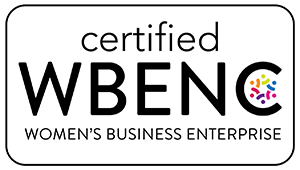Perceptions on Polarization
The following is a reflection on Susan Bandes’ article, “Victims, ‘Closure’, and the Sociology of Emotion.”
The majority of us are conflict averse, meaning that we do not like to deal with the issues and emotions around tense and uncomfortable disagreements or interactions with others. As conflict resolution practitioners and scholars in this field we aspire to the antithesis of polarization, i.e. forbearance, cooperation and healing. In our mind’s eye, polarization conjures up images of intense anger, hurt, pain, frustration, intransigent conflict, right, wrong, all wrong, overwhelming, so overwhelming. Polarization due to unengaged conflicts is something we have all witnessed, something that we have all experienced first hand. As conflict resolution practitioners and scholars we are called to study the effects of polarization, design collaborative interventions and create opportunities for shifts in attitudes and perceptions of the ‘other.’
The following is a reflection based on experience working on over a dozen reconciliation projects in 9 different states.
How are we meeting people where they are even if they are on opposite sides of the table, the room, or the polarization is so great that they can’t even stand in the same room anymore? How are we creating opportunities for healing in this polarized world of ours?
In “Victims, Closure, and the Sociology of Emotion” Dr. Bandes states, “victim impact testimony tends to lead to the conclusion that those who truly value the victim and wish to honor his loss will support a death sentence for his murderer. That is, often the victim impact statement has become part and parcel of the prosecution case, and a barely disguised plea for a death sentence.” She continues, “Thus the claimed therapeutic goal of survivor closure has become an argument for more and speedier executions generally. The victim impact approach illustrates in particularly dramatic form the inadequacies and distortions of the private, dyadic model for understanding the emotions of a capital trial.1”
Experience has shown that large and small scale community reconciliation efforts also highlight these inadequacies in the theoretical knowledge of individual dyadic conflicts in understanding the emotions around group conflict. A capital trial with all of the different people, “camps or groups” and power dynamics can be seen more or less as a microcosm of a community. We as a society (as individual practitioners and scholars) have our own aversions to conflict, to anger and to emotion, our own as well as others. In individual dyadic conflicts, apologies usually precede forgiveness which is typically preceded by a new understanding of the circumstances of the past. Is it possible to create this scenario on a large scale, if so, how?
One of the collaborative visioning models we use is called the Collaborative Change Approach2. This framework, an analytical, holistic approach is designed to address identity conflicts with disputants working together to find a solution that will satisfy the needs of both sides. We pull together the different identity or stakeholding groups (separately at first) to either build consensus or engage conflicts. Before negotiating begins, we ask all of the participants to share their stories: Why do you care passionately about your community? About your school? About the future of police-community relations? Why do you care passionately about access to quality water in your community? Why here? Why now? Why you?
According to Rothman, “Such dialogue fosters a rich articulation and recognition of the roots of a conflict. Through a guided discussion about what adversaries care about most deeply and why, disputants may begin to speak so their opponents can listen, and listen so their opponents can speak.3” Through this process of interactive introspection, the participants are brought together with those who they may have fought and hated into a process of articulating their respective identity, needs and values.
In one particular initiative, The Fleet Visioning Project, we used the Collaborative Change Approach to facilitate a process whereby recreational and commercial fisherman, environmentalists, researchers, government officials and any one else impacted by the groundfishery were brought together to develop a Vision for the future of the northeast groundfishery. With over 250 completed surveys, one hundred participants in 10 different feedback sessions expanding from the tip of Long Island, NY to Winter Harbor, ME, a Vision for the future of the Groundfishery was articulated.
During one of the feedback sessions in Portsmouth, NH, we were particularly tired. We had facilitated a session the day before in ME, got up early in the morning and drove 6 hours to New Hampshire. There was a good mix of fishermen, one environmentalist, community members in the circle and in this case an entire class from a local university who came to observe the process. As we were completing the introduction, a tall man walked into the room and took a seat in the circle. The whites of his eyes were red and his body posture told us he was angry. As facilitators we immediately thought to ourselves, “Oh, no.” We asked the group to share WHY they each care passionately about the future of the Grounding fishing fleet? We set the ground rules: “This is not a time to challenge each other, instead it is a time to understand and be understood, if you have a clarifying question please ask it” Rarely if ever is this simple ground rule broken because it is difficult to make a person’s story wrong: “it is his story, it is her story” and it is amazing to see the shifts within each individual and those within the circle as people begin to share from their hearts. So as this gentleman, who by the way is both a fisherman and a member the New England Fisheries Management Council began by saying, “Frustration.” As the facilitators, we encourage him to think about why he is passionate…to reframe his word positively. He quickly and firmly told us to reframe it. He began to share his story, telling the group about how two nights previously his son came to him and said, “Dad, I can’t do it. As much as I love fishing, I can’t be a part of it, I can’t join the industry.” This man was obviously heart broken by his son’s decision and the outlook of the industry in general. He proceeded by sharing what fishing meant to him, why he had dedicated his life to feeding the people, supporting the economy of his community and being an important thread to its cultural heritage. As he concluded his story, he said, “my passion is Participation, I want everyone who wants to participate in the fishing industry to be welcome.” Through this experience many others in the circle were shaking their heads because something about this story resonated with their own stories. This fisherman was able to connect with everyone in the room, conservationists, researchers, as well as other fishermen while at the same time reconnecting with his own passion. This was a shift, however subtle, from desperation to possibility from frustration to participation. The weight on his shoulders lightened, his face softened and he joined the rest of his group as they negotiate the vision for the future of the ground fishing fleet in Portsmouth NH.
We have heard hundreds of stories like this one and each one represents a step toward depolarization and a small window to healing. “Only when people are clear about their own values and motivations can they truly say what they mean. And only when they can fully articulate what they mean can they act upon their ideas.”4 The ultimate goal of the ARIA framework is to give individuals and groups the opportunity to get clear about their needs and wants and through this full and honest expression of the motivations underlying the conflict, harmony is possible.5
These stories are shared within a larger social context, much like the victim impact statement being shared during capitol cases in a court room. How can these ‘shifts’ – catharsis for victims…be sustained….continued? How can we create a paradigm of restorative justice and not retributive justice with the expression of emotion? Is this possible without doing harm to the defendant or to the family members who may not get the ‘closure’ to which they were promised? How do we as practitioners and scholars help set the guide posts and be the support needed for folks to first, let go of their one way of being or interacting to another based on shared relations and coexistence? How can we help these folks acknowledge and re-write their own history so that history is not writing the future?
Engaging With Those We Do Not Necessarily Want To- A Source of Resistance:
The last point is engaging those we do not necessarily want to whether it is because these individuals represent those with all the power, a dysfunctional government structure or are they themselves the ‘perpetrator’. We feel that to convince them to be a part of the process or even to sit with them would legitimize them. Experience has shown time and again that engaging these folks in the project creates the greatest possibility for healing and transformation. But how do we do it?
One of the key questions we ask ourselves during the planning phase of any community reconciliation project is: who stands to lose the most as a result of this process? In community contexts the response to this question may be surprising. In an environmental conflict for example, one may quickly think of the representatives of the major industries – coal, timber or natural resource reps and those from the national park service. The less obvious (and maybe most important) community representatives include the local non- profit advocacy group whose very identity is based on keep alive the conflict in which ones initiative intends to engage. How do we engage these folks in a collaborative process? What pre-work must be done so that these individuals or groups are legitimate and empowered as to stand against the system in which they exist. Another example, is the Greensboro Truth and Reconciliation Commission where this group in the process of truth telling and reconciliation seeking sat down with Klansman and Neo-Nazis to name but a few. Or how about a project Santa Barbara CA designed to bring the community together around alleviating the Latino Achievement Gap – it was the first time any one inside or outside the school district asked students what they wanted for their school, their hopes and dreams for an equal bite at the apple. Student involvement in discussing the issues and goals for alleviating the achievement gap seem so essential, doesn’t it?
This idea of inclusion may seem so obvious, but it is crucial that we as scholars and practitioners continue to question our own comfort zones and biases and to acknowledge the inadequacies and distortions of the private, dyadic model in understanding emotions in both the capital system as well as our community reconciliation efforts. Our ability to participate and express our emotions are two essential aspects of ‘being’ human so if the models that we have in place for these are inadequate, then how do we create the space for expression of emotion, expression of self, and a space in which apology and forgiveness are possible?
References:
- Bandes, Susan. “Victims, ‘Closure’, and the Sociology of Emotion,” (2007)
- Additional information previosly found at: http://www.affund.org/PDFs/CR%20CCA.pdf
- Rothman, Jay. Resolving Identity Based Conflicts: In Nations, Communities and Organizations. Jossey- Bass, 1997.
- Rothman 1997: 18
- For more information go to: www.ariagroup.com





Leave a Reply
Want to join the discussion?Feel free to contribute!